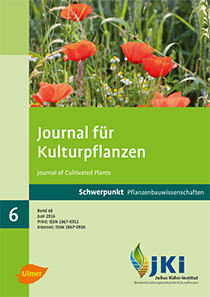Influence of the Clearfield system on yield, weed control and economy in winter oilseed rape
Keywords:
Clearfield winter oilseed rape, Imazamox, yield, oil content, herbicidal effects, economic evaluation, UFOP (Union for the Promotion of Oil and Protein Plants)Abstract
The performance (yield, oil content, economic evaluation) of Clearfield winter oilseed rape has been investigated throughout the years 2012–2014 in a total of 19 field trials at seven sites distributed over Germany. In each year two common winter oilseed rape hybrid varieties (Dimension and Visby) have been compared with three different Clearfield hybrids. Besides the performance of the varieties, the effect of typical pre-emergence and post-emergence herbicides has been tested (pre-emergence: Colzor Trio 4.0 l/ha (187.5 g/l Dimethachlor + 187.5 g/l Napropamid + 30.0 g/l Clomazone), post-emergence: Butisan Gold 2.5 l/ha (200 g/l Metazachlor + 200 g/l Dimethenamid-P + 100 g/l Quinmerac)) compared to the application of the Clearfield herbicide Vantiga® D (2.0 l/ha (375 g/l Metazachlor + 125 g/l Quinmerac + 6.25 g/l Imazamox) + 1.0 l/ha Dash E.C. (formulation enhancers)). Taking the mean over all years and sites no significant yield differences between the tested standard systems and the Clearfield system have been observed within the project. Only the variety had a significant influence on the oil content. With an oil content of 44.4%, the variety Dimension showed the highest values across all investigated years and sites. The Clearfield herbicide reached comparable herbicidal effect against the problematic weeds arising in the project as the examined common alternatives. Concerning the adjusted market performance, no significant differences between the herbicide treatment systems have been found. Therefore, the profitability of the Clearfield system has to be evaluated in dependence of the site, the occurring weeds and other farm specific circumstances.
DOI: 10.5073/JfK.2016.06.01, https://doi.org/10.5073/JfK.2016.06.01








